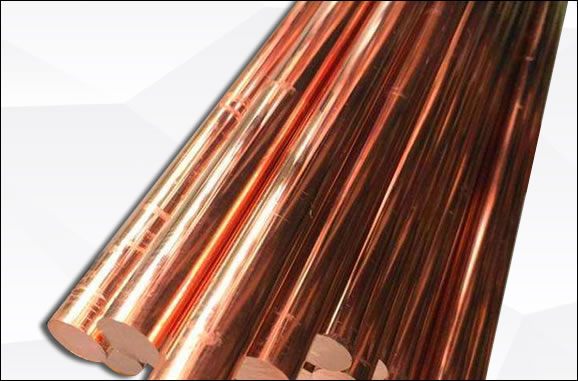Welcome to Our Website
Copper wire rods are the starting material used in the production of various copper-based products, including wires, cables, electrical conductors, and other components. They serve as the raw material for wire drawing processes, where they are drawn into different gauges and shapes. We will explore the specifications, packing methods, dimensions, weight ranges, rod diameters, and the differences between brass, purple copper, and bronze.

Specifications of Copper Wire Rods:
Copper Content: Copper wire rods are typically manufactured with a high copper content, usually ranging from 99.5% to 99.9%. This high level of purity ensures excellent electrical conductivity and corrosion resistance.
Oxygen Content: Oxygen content is an essential specification for copper wire rods as it affects the wire's mechanical and electrical properties. Low oxygen content is preferred to minimize the risk of embrittlement and enhance the wire's ductility.
Diameter: Copper wire rods come in various diameters, depending on the desired wire gauge and application. Common diameters range from 8 mm to 25 mm, with finer gauges produced through subsequent wire drawing processes.
Packing of Copper Wire Rods:
Copper wire rods are carefully packed to ensure their protection during transportation and storage. Some common packing methods include:
Coil Packing: Copper wire rods are often packed in coils, where the rods are wound in a circular shape. The coils can vary in size and weight, depending on the specific requirements.
Bundles: In some cases, copper wire rods are packed in bundles, where several rods are securely tied together using steel straps or wires. This packing method provides stability and ease of handling during transportation.
Length and Width of Copper Wire Rods:
The standard length of copper wire rods is usually around 4 to 6 meters. The width of the rods is determined by the diameter, with larger diameters resulting in wider rods.
Range of Weights and Rod Diameters:
Copper wire rods are available in a range of weights and diameters to cater to different applications and manufacturing processes. Common weight and diameter ranges include:
Weight Range: Copper wire rods can range from a few kilograms to several metric tons in weight. The weight range depends on the diameter, length, and specific requirements of the customer.
Diameter Range: Copper wire rods come in various diameters, typically ranging from 8 mm to 25 mm. However, larger diameters may also be available for specific applications.
Differences Between Brass, Purple Copper, and Bronze:
Brass, purple copper, and bronze are copper alloys, meaning they are composed of copper combined with other metals to enhance specific properties. While they all contain copper, they differ in terms of composition and characteristics.
Brass:
Composition: Brass is an alloy of copper and zinc. It can also contain small amounts of other elements such as lead, tin, or aluminum to achieve specific properties.
Color: Brass has a yellowish color, similar to gold.
Characteristics: Brass has good corrosion resistance, excellent malleability, and low friction. It is often used in applications requiring decorative finishes, musical instruments, plumbing fittings, and electrical connectors.
Purple Copper:
Composition: Purple copper, also known as pure copper or electrolytic tough pitch (ETP) copper, is essentially pure copper with a minimal amount of impurities.
Color: Purple copper has a reddish-brown color.
Characteristics: Purple copper possesses excellent electrical conductivity, high thermal conductivity, and superior corrosion resistance. It is widely used in electrical wiring, power transmission, and various electrical components.
Bronze:
Composition: Bronze is an alloy of copper and tin, although other metals such as aluminum, zinc, and nickel can be added. The tin content in bronze is typically higher than in brass.
Color: Bronze can vary in color, ranging from a reddish-brown to a dark golden-brown shade.
Characteristics: Bronze exhibits excellent strength, wear resistance, and durability. It is commonly used in applications such as bearings, bushings, sculptures, and musical instruments.